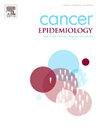Trends and disparities in locoregional treatment of programme-detected ductal carcinoma in situ in New Zealand women, 1999–2022
IF 2.3
3区 医学
Q3 ONCOLOGY
引用次数: 0
Abstract
Purpose
Ethnic and socioeconomic disparities exist in treatment of invasive breast cancer in New Zealand. This study investigated trends and disparities in locoregional treatment of ductal carcinoma in situ (DCIS) detected by BreastScreen Aotearoa (BSA), the national breast screening programme.
Methods
Women with programme-detected DCIS from 1999 to 2022 were identified from BSA records linked to the national cancer registry and hospital discharge records. Logistic regression identified associated factors.
Results
Of the 6087 cases identified, 39.7 % received breast-conserving surgery (BCS) with radiotherapy (RT), 31.5 % had mastectomy and 28.8 % had BCS alone. BCS with RT increased from 27.6 % in 1999 to 41.1 % in 2006, followed by a modest increase to 46.7 % in 2022, while mastectomy decreased from 33.3 % in 1999 to 25.4 % in 2022. The post-BCS RT use was less common among Pacific women. Sentinel lymph node biopsy (SLNB) increased from 6.2 % in 2004 (when it was implemented nationwide) to 26.0 % in 2007, then reached 37.1 % in 2013, before declining to 24.5 % in 2022. Pacific and Asian women who had mastectomy were more likely to have SLNB. Immediate breast reconstruction (IBR) after a mastectomy increased from 11.4 % in 1999 to 39.8 % in 2009, then underwent a modest decline to 22.7 % in 2022. Māori, older women, and those living in the deprived or rural areas were less likely to receive IBR.
Conclusion
Locoregional treatment for programme-detected DCIS has improved over time; however, ethnic and socioeconomic disparities persist, underscoring the need to improve equity of cancer care in New Zealand.
1999-2022年新西兰妇女原位导管癌局部区域治疗的趋势和差异
目的新西兰浸润性乳腺癌的治疗存在种族和社会经济差异。本研究调查了国家乳腺筛查项目乳腺筛查(breast screen Aotearoa, BSA)检测到的导管原位癌(DCIS)局部治疗的趋势和差异。方法从与国家癌症登记处和医院出院记录相关的BSA记录中确定1999年至2022年规划检测到DCIS的女性。逻辑回归确定了相关因素。结果在6087例病例中,39.7% %行保乳手术(BCS)加放疗(RT), 31.5% %行乳房切除术,28.8% %单独行保乳手术。BCS与RT从1999年的27.6% %增加到2006年的41.1% %,随后适度增加到2022年的46.7% %,而乳房切除术从1999年的33.3% %下降到2022年的25.4% %。在太平洋地区妇女中,bcs后RT的使用不太常见。前哨淋巴结活检(SLNB)从2004年的6.2 %(当时在全国实施)增加到2007年的26.0% %,然后在2013年达到37.1% %,然后在2022年下降到24.5% %。切除乳房的太平洋和亚洲女性患SLNB的可能性更大。乳房切除术后立即乳房重建(IBR)从1999年的11.4% %增加到2009年的39.8% %,然后在2022年经历了温和的下降到22.7% %。Māori、老年妇女以及生活在贫困地区或农村地区的妇女接受IBR的可能性较小。结论随着时间的推移,局部区域治疗方案检测DCIS有所改善;然而,种族和社会经济差异仍然存在,强调需要提高新西兰癌症治疗的公平性。
本文章由计算机程序翻译,如有差异,请以英文原文为准。
求助全文
约1分钟内获得全文
求助全文
来源期刊

Cancer Epidemiology
医学-肿瘤学
CiteScore
4.50
自引率
3.80%
发文量
200
审稿时长
39 days
期刊介绍:
Cancer Epidemiology is dedicated to increasing understanding about cancer causes, prevention and control. The scope of the journal embraces all aspects of cancer epidemiology including:
• Descriptive epidemiology
• Studies of risk factors for disease initiation, development and prognosis
• Screening and early detection
• Prevention and control
• Methodological issues
The journal publishes original research articles (full length and short reports), systematic reviews and meta-analyses, editorials, commentaries and letters to the editor commenting on previously published research.
 求助内容:
求助内容: 应助结果提醒方式:
应助结果提醒方式:


